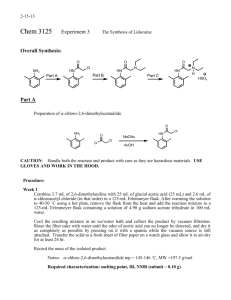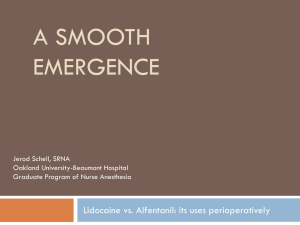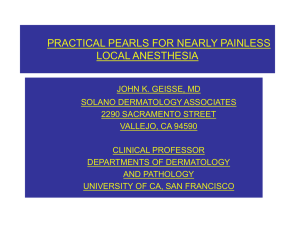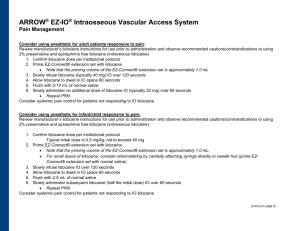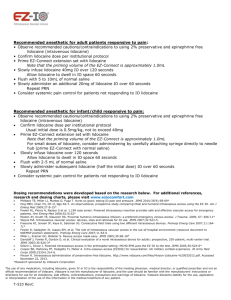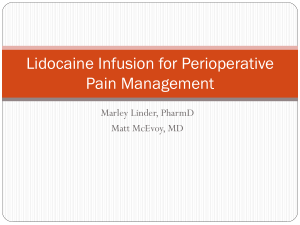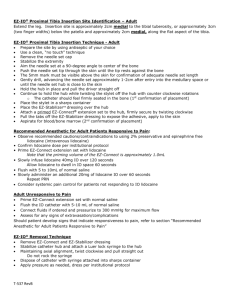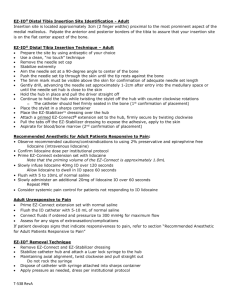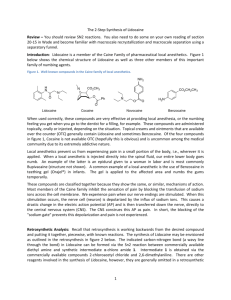Tumescent Liposuction Lidocaine Tolerance
advertisement
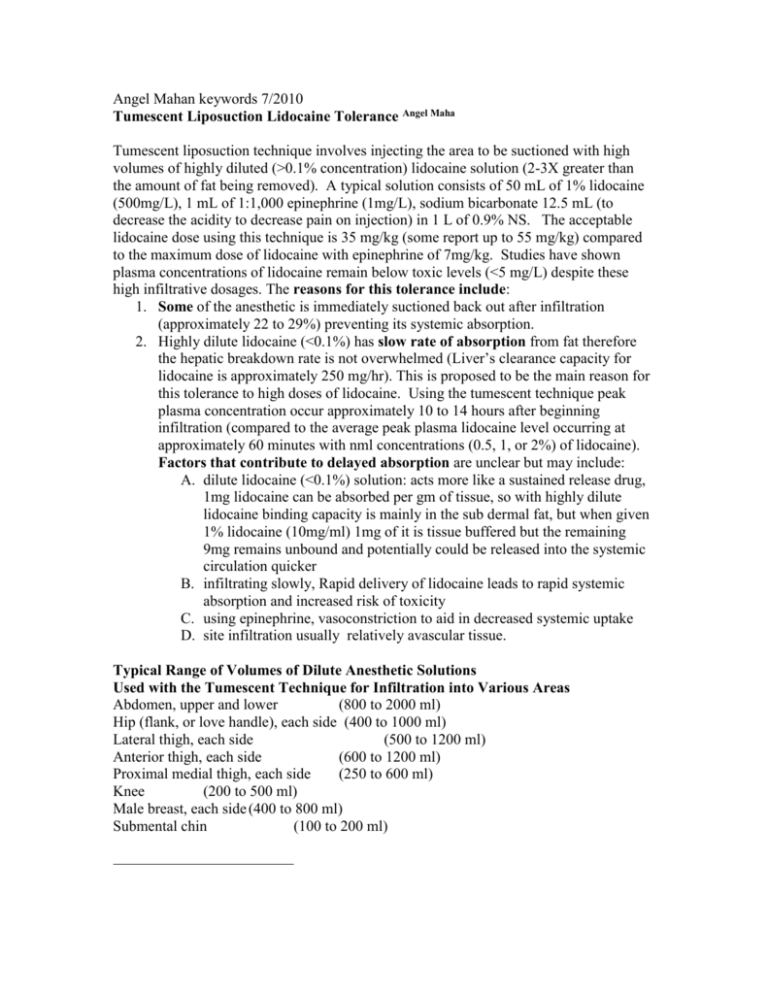
Angel Mahan keywords 7/2010 Tumescent Liposuction Lidocaine Tolerance Angel Maha Tumescent liposuction technique involves injecting the area to be suctioned with high volumes of highly diluted (>0.1% concentration) lidocaine solution (2-3X greater than the amount of fat being removed). A typical solution consists of 50 mL of 1% lidocaine (500mg/L), 1 mL of 1:1,000 epinephrine (1mg/L), sodium bicarbonate 12.5 mL (to decrease the acidity to decrease pain on injection) in 1 L of 0.9% NS. The acceptable lidocaine dose using this technique is 35 mg/kg (some report up to 55 mg/kg) compared to the maximum dose of lidocaine with epinephrine of 7mg/kg. Studies have shown plasma concentrations of lidocaine remain below toxic levels (<5 mg/L) despite these high infiltrative dosages. The reasons for this tolerance include: 1. Some of the anesthetic is immediately suctioned back out after infiltration (approximately 22 to 29%) preventing its systemic absorption. 2. Highly dilute lidocaine (<0.1%) has slow rate of absorption from fat therefore the hepatic breakdown rate is not overwhelmed (Liver’s clearance capacity for lidocaine is approximately 250 mg/hr). This is proposed to be the main reason for this tolerance to high doses of lidocaine. Using the tumescent technique peak plasma concentration occur approximately 10 to 14 hours after beginning infiltration (compared to the average peak plasma lidocaine level occurring at approximately 60 minutes with nml concentrations (0.5, 1, or 2%) of lidocaine). Factors that contribute to delayed absorption are unclear but may include: A. dilute lidocaine (<0.1%) solution: acts more like a sustained release drug, 1mg lidocaine can be absorbed per gm of tissue, so with highly dilute lidocaine binding capacity is mainly in the sub dermal fat, but when given 1% lidocaine (10mg/ml) 1mg of it is tissue buffered but the remaining 9mg remains unbound and potentially could be released into the systemic circulation quicker B. infiltrating slowly, Rapid delivery of lidocaine leads to rapid systemic absorption and increased risk of toxicity C. using epinephrine, vasoconstriction to aid in decreased systemic uptake D. site infiltration usually relatively avascular tissue. Typical Range of Volumes of Dilute Anesthetic Solutions Used with the Tumescent Technique for Infiltration into Various Areas Abdomen, upper and lower (800 to 2000 ml) Hip (flank, or love handle), each side (400 to 1000 ml) Lateral thigh, each side (500 to 1200 ml) Anterior thigh, each side (600 to 1200 ml) Proximal medial thigh, each side (250 to 600 ml) Knee (200 to 500 ml) Male breast, each side (400 to 800 ml) Submental chin (100 to 200 ml)


